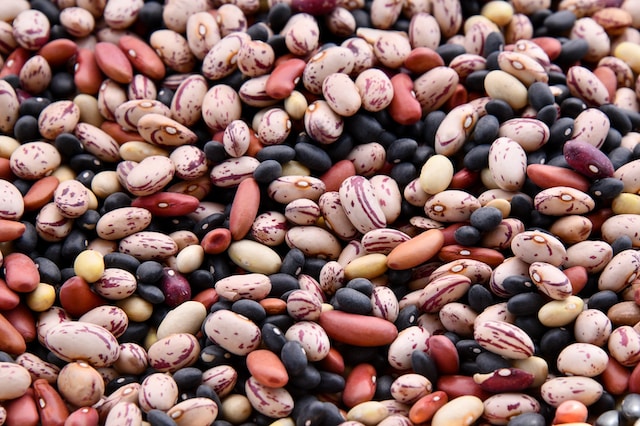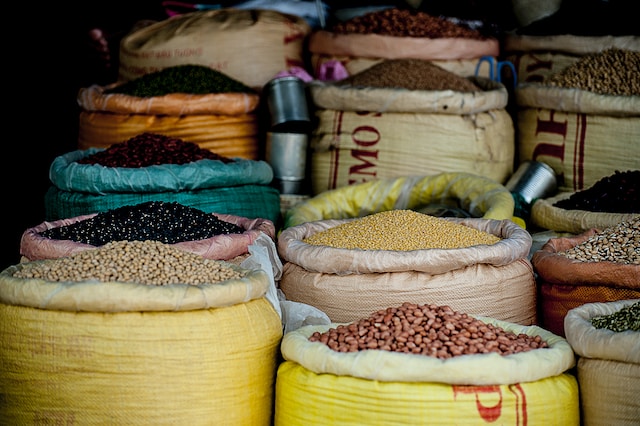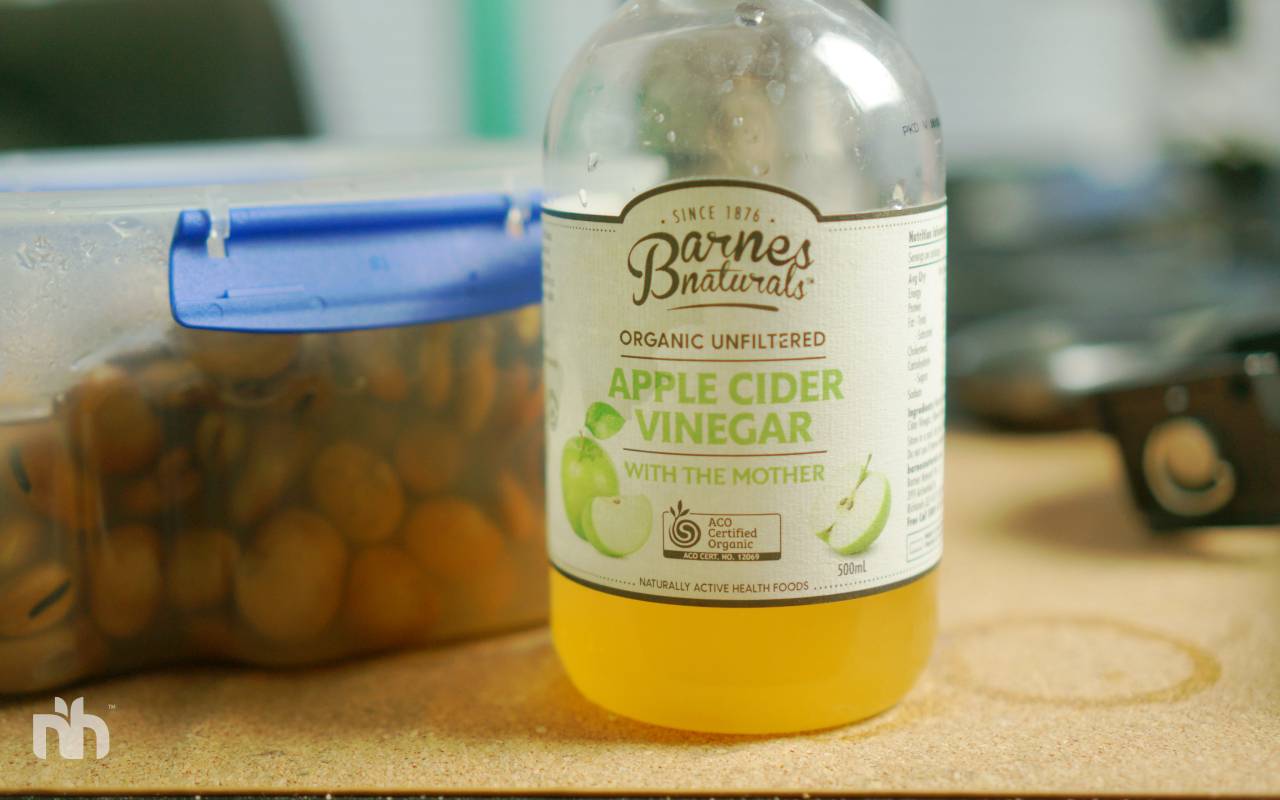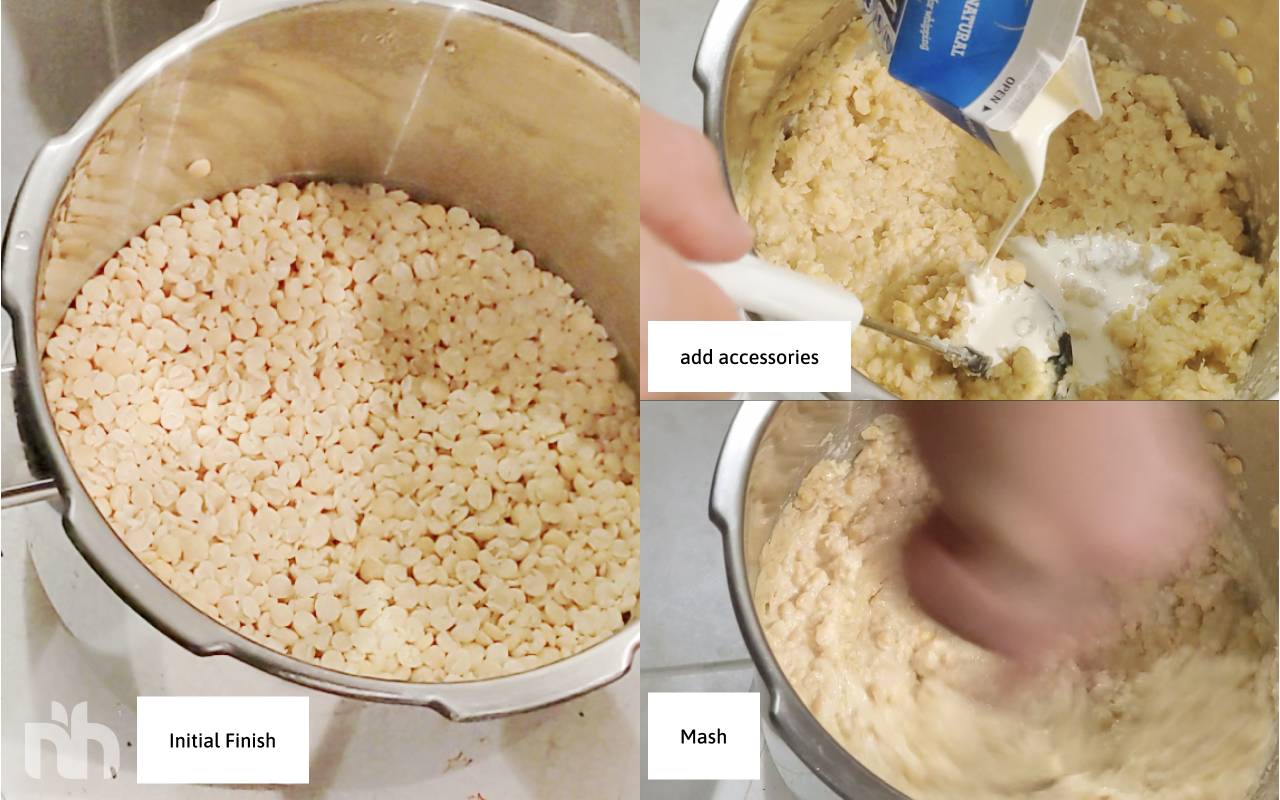
Fasting. Authentication. Inquire. Repeat

Cliff
"Why can't you live off beans and rice? And live like everybody else?" My answer: "I follow my own gut instinct, thank you."In this first of two part feature article I'll start with the conclusion ~ my stance, brief context, and finally practical reminders.
Part 1 of 2. My stance summary.
As anyone suspect coming from traditional against-the-grain low-carbohydrate, and now - Cyclical Keto + Intermittent Fasting - I lean towards the cautionary camp.
Once in a while / a meal every few weeks occasion? Not a problem. Every weekend refeed? Somewhat tolerable. Every single day? Not so tolerable.
Beans and legumes, no matter how seemingly "well cooked", still in some likelihood produce an adverse reaction. For bit of trivia the longest preparation I've done ~ all the way from initial stage of soaking to storage ~ span three (3) entire days. Firstly ~ two (2) days worth of soaking with apple cider vinegar. Then with pressure, not stove cooking - for almost three hours total. Not just one, but on two (2) separate sessions.
Despite all that, I still experience reactions. But what sort exactly? Not life threatening. Inflammation? No. Collateral discomforts? Yes. Does it affect my motivation to eat? Potentially yes.
I remembered not one but repeated occasions. Black beans (canned as far as I remembered, re-washed) with rice during a refeed day~ completely detracts me from eating altogether the next few hours. We're not talking mere discomfort here but real, actual stabbing pain - in the stomach and lower backs. Imagine all this, taking place on refeed day after a week of deficit + training ~ one should savour this opportunity. Not, from my "humble" experience - be subjected to gaseous stress.
Agree or disagree, everyone should has a right to stand on their own experience. This article is aimed for individual imploring just how important for us all to take calculated and most importantly self-journalled ~ experimentations. After all, with patience and introspection manifests your own experience.
Context.
"Legumes" refer to the ovearching family of beans, and pulses (Latin ~"Fabaceae" or "Leguminosae"). They are a container or pods that houses inside - the edible category of pulses, further expanded to what we know today as the edible beans, peas and lentils.
So "what" are the things we're actually concerned with? FODMAPs ~ the indigestible carbohydrates found throughout many pulses. But also amongst dairy, fruits and condiments. To keep the length of this feature-writeup reasonable, I will only be discussing pulses.
In summary ~ "FODMAPs" is one (1) set of acronyms representing short-chain fermentable macromolecules, as follows:
- F - Fermentable (as the beginning of phrase ~ to indicate sugars and fibers that are fermentable <followed by any one of these below>
- O - Oligosaccharides (this group is our primary concern here in this writeup)
- Fructans (Inulin & Fructo-oligosaccharides or shortened as FOS)
- Galacto-Oligosaccharides (shortened as GOS)
- Usual suspect: Inulin, Maltodextrin (Arnold AR, 2018.).
- D - disaccharides
- "Di" ~ meaning two sugars - usual suspect: lactose.
- M - monosaccharides
- "Mono" single string sugar ~ usually suspect: free form Fructose.
- O - Oligosaccharides (this group is our primary concern here in this writeup)
- A - [(And) / Ampersand to connect with the final group below]
- P ~ polyols / polysaccarides
- poly ("more than one" molecule) Sugar Alcohols. ~ suspects: Sorbit-ol, Mannit-ol, Xylit-ol, Errithryt-ol
(there may be others for simplicity sake only the commonly-known basics are mentinoed here).
- poly ("more than one" molecule) Sugar Alcohols. ~ suspects: Sorbit-ol, Mannit-ol, Xylit-ol, Errithryt-ol
Once arrived in the colon FODMAPs generally escape digestion. Noteworthy among them to our attention (of which there are many, this is just example) is Fructans as we see under the "O" category as a complex chain of carbohydrates. The problem here is that we simply do not have the enzymes to digest them; hence their transit throughout the digestive tract remains (arguably) undigested. Fermentation then becomes inevitable, leading to a number of undesired implications:
- Luminal (or "intestinal") Distension. Or simply swelling throughout the small and large intestines as digestion generally proceeds.
- Then, the potential Diarrhoea. This is due to FODMAP's inherently osmotic (water-attracting) characteristic (Gibson P. 2013 ~ watch @ 36 minute mark).
- ...And of course we shall not forget. The-silent-but-deadly exit(s). No citation needed.
If left untreated we may have a potentially warranted case, or diagnosis as IBS or Irritable Bowel Syndrome. Implications are broad enough affecting multiple systems, to name a few ~the Central Nervous system (Gibson P. 2013) psychology (Mikocka-Walus A et al. 2008) , (Asahina S et al. 2006) and endocrinology + auto immunity conditions (Abbott DR 2019. et al).
Of course as with all things in nutritional science, everything is a shade of grey. The Oligosaccharides "FOS" and "GOS" for instance appears praised for their metabolic health effects in women (Dall'Oligio F. et al 2018) ; although another study on mixed-gender adults found the opposite (Liu F et al. 2017) . Next, undergoing prolonged FODMAP restriction, despite their evident efficacy across general population (O'Keefe, et al. 2018) - appears to correlate with an overall shift of gut microbiota to being less favourable (Save, K. 2018); with a further interesting highlight that calcium uptake may be impaired as a result.
Once again, this writeup is meant to practically inform but only to a certain point-in-depth. Due to time constraint, we cannot go too far as that of Self-Meta level. Otherwise that will easily require month(s) worth of writing.
Disclaimer. This first of two feature article is definitely not meant to discount, or permissively dismiss readers from further reading at their own end. For those undergoing strict FODMAPs elimination, and reintroduction protocol they should remain well advised to follow their dieticians order. The following information are only suggestive advices subject for individual's own trials and experiences, however they certainly do not constitute as prescriptive overrides. Please therefore exercise your own indemnity before proceeding.
The Reminders.
So, here are the points worth considering for anyone thinking of including, or cautiously introducing ~ any type of pulse - beans, legume, peas or lentils in however amounts they're comfortable with, subject to revision and/or tinkering/adjustment at their own end.
1/5
Research, and portion to individual tolerance. Adjust until a response is noted. Increase, decrease, or eliminate.
From therapeutic practice, one source (Scott A & Baker J. 2020) suggests the following being rated as safe or "green" amounts for those officially undergoing a Low FODMAP protocol:
- 1/3 cup canned cannellini beans
- 1/3 cup canned red kidney beans
- 1/4 cup canned chickpeas
- 1/4 cup canned lentils
- 1/4 cup boiled lentils (green or red)
- 1/4 cup canned butter beans
- 1/4 cup boiled lima beans
- 2 tbsp black beans
Loosely speaking ~ 1/3 cup of beans, presumably cooked ~ constitute anywhere between 10 - 14 grams of carbohydrates, but only 5-8 grams of protein. 70-80kcals give or take.
But what or how does "low", "moderate" and "high", after all, means? How does one qualifies as such? That can only be experienced through biological experience. That ~ is where individual self-Journalling comes in.
The initial step here is to try surveying + documenting our "baseline" account or baseline experience as thoroughly possible. The following provides only a crude guide, although not for immediate prescriptive use for everyone, right away without some perpetual adjustments beyond this entire concept initiative's indemnity :
- Batch prepare / cook the beans as usual. You can either follow the manufacturer or Youtube® instructionals, or refer down to Points #4 (Soaking) and #5 (Pressure Cooking).
- Assuming whoever currently reading this have no prior experience to dieting or food manipulation ~ schedule and prepare your meals as usual on exact same timing as usual.
- For your solid feature meal ~ make the majority of this meal to compose primarily of the suspecting FODMAP. Eg.If you are used to having mixed protein sources, you must conciously and re-arrange your meal composition so that the largest portion of this must feature the beans/legumes/peas.
- Keep using other accessory(s) or condiments typically accompanied on this exact same meal, and on this exact same timing as before.
- Eat until you are full, as per your usual satiety. Journal your satiety, and digestion comfort levels (not just immediately after, but at least an hour after this feature meal).
- Your first initial / first ever written down passage = represent your baseline experience.
On your next day, on the exact same feeding window and/or time, depending on how you feel ~ either decrease or increase your portion of the suspecting food. Reassess. No problems? Increase another serve on the next day. Somewhat not good? Decrease or eliminate. From hereonwards, update your journalling and compare these from your baseline. Revise, reflect, repeat.
The aim here is to keep documenting, until you find or experience a reaction.
Nonetheless, a notable finding as accordingly to this research review (Lacovou M et al. 2015) suggests that a so called "greatest" improvement for FODMAP symptoms-relief ~ appear to be at seventh day of strict avoidance protocol. This however, may not translate to everyone whom are not accustomed, or yet familiar with elimination experiences. Hence the old adage YMMV ~ certainly applies.
2/5
Be patient. Very patient.
It takes anywhere from 6 to 24 hours (Baker, J. 2017), depending on gut health, and/or conditions ~ before any food start to arrive in the colon and commence fermentation. In other words, any symptoms or signs associated with fermentable sugars or FODMAPs, will likely manifest at this point. So be sure to take note anywhere around 24 hour mark, after you have eaten that meal containing the suspected beans. Do not calculate based from just the very last bite of food you eat prior to fasting window. Unless of course that very last bite of food do contain suspecting FODMAPs.
As bit of reminder, food digestion "priority" go analogously in terms of "layers"; depending on:
- Solidity of the food. Obviously, more = the slower the overall motility/movement/peristalsis thus slower digestion.
- Liquidity of the food. Obviously, more = the faster overall motility/movement/peristlasis thus faster digestion.
Irrespective, digestion takes time.
Even if you do not feel anything at even 10-12 hour mark of fasting, wait until you introduce lots of moderate movements. This I am referring to exercise where and when the abdominals are subject to moderate amounts of movement, but not necessarily so at an exertion level. Be prepared that around this point is when any distress symptoms will likely unfold. I certainly had my "occasions", embarassingly so at times ~ DURING training. 15 minutes down the drain.
So, what common symptoms to look out for?
- (Obviously) ~ prolonged "clenching" of the abdominals, to withstand gas production.
- Sudden urge or bloated pains ~ signalling very large to uncomfortably painful ~ bowel movements including diarrhoea.
- More noticeable thirst, leading to water retention. Reminder that FODMAPs are generally osmotic, or highly attractant with water (Gibson P. 2013 ~ watch @ 36 minute mark).
- Unexplainable or unexpected heaviness, out of ordinary inbetween meal post-prandial (after meals) sensation.
Another emphasis on patience I must proclaim, at least from my own N=1 experience ~ is that it takes weeks, to potentially months from abstaining any suspecting legumes - for me to appreciate back the feeling of just being "myself". That is, without burden, without encumbrance..
3/5
Buy and keep dry in the pantry.
Dry beans are long-and-value-lasting, than canned beans. Obviously, anything that is bound in water may not last as long if we are talking about survival situations. So long as they are bought dry ~ they generally keep well sitting under dry conditions for at least a year if not more, as suggested by a source here (eatbydate.com) .
On a more very interesting claim, anywhere between 25-30 years of storage is reportedly safe to eat. But the source suggests that pressure-cooking times may need to be lengthened and that additional treatment with baking soda seemed widely suggested.
At the very least, until there are more source(s) or references to replicate this finding - if in doubt - do not eat.
4/5
To prepare: soak for at least 16 hours.
Rewashing, draining, and cooking ~ canned beans are still not enough at removing the two prime sub-suspect(s) of FODMAPs (Catsos, P. 2020). Namely GOS "galacto-oligosaccharides" and FOS "Fructo Oligosaccharides".
Hence, for peace of mind by default I'd choose dry whole beans. That way I can soak them myself.
I use tablespoons worth of ACV and 1/2 tsp of baking soda into 300g to 400g (what I usually make a time) with boiling water. Once it has soaked after about 12 hour mark. Drain and reboil the water and continue re-soaking for another, although optional ~ 12 hours.
The longest soaking time I infrequently tried occasionally on record was around 48 hours, this include draining and resoaking every 12 hours.
5/5
Use a pressure cooker (highly recommended).
The most indispensible cookware, other than authentic stainless steel pan one should arguably have in a kitchen, is a pressure cooker. Choosing the right one however can be an expensive trial and error. My first was a budget <$AUD 70 electrical ones at Kmart, and was supremely disappointed how overhyped it is. Firstly, when adding up the WARMING up time plus the cooking time ~ is actually not much different than stove top cooking. Further - the inner pot is the inferior PTFE non stick coating, which I should have known all the more better, although a few months too late.
That leaves us with only two choices. Either the overpriced Instantpot®, or the IKEA® 365. IKEA®, love or hate them ~ is the winner. For the first time, we have a product that actually works as advertised. An actual "pressure" cooker.
- Soak the beans first, obviously and ideally 16+ hours.
- Wash and drain under running water. Transfer to the pressure cooker and level with water just when everything is covered, roughly. Close the lid as accordingly to the instruction manual.
- Pre-heat (assuming readers are using a on-the-stove pressure cooker, stainless steel) using highest heat on your stove.
- For about 10 minutes, the pressure valve lifts up completely, indicating the pressure has built up exactly as we wanted it.
- Now lower the heat to lowest setting. If the pressure valve drops again, it might be worthwhile use somewhere between lowest and low heat level.
- For as long as the pressure valve remain lifted ~ the actual pressure cooking begins (and continues).
- After 30 minutes ~ telease the valve by flipping the release pressure lever with a point instrument. Warning: be prepared to witness large bursts of steam pressure.
- Wait until it releases all the excess steam, once the valve has dropped ~ it is now safe to open the lid.
- Assess doneness.
- Add any other accessory ingredients. Mash.
- Done.
The above is for a pressure cooker.
For stove top, the goal here is to keep everything at a simmer but not overly, and keep adding water whenever it dries up. This entire process takes anywhere from 30 to 45 minutes.
Other noteworthy concerns.
Now, we're getting onto the niche and nuanced section.
1/2
Favism. A legitimate concern.
A legitimate concern raised amongst legume consumption is Favism, a hemolytic anemia (red blood-cell-breakdown) illness correlated with consumption of Fava or Broad Beans particularly amongst individuals of Mediterranean, African and South East Asian Descent. It is widely thought that this illness appears to be genetically derived, from those who were born deficient in the Glucose 6 Phosphate Dehydrogenase, or G6PD for short. This enzyme, one of many seemingly-like numerous others (eg. "SOD" /" Superoxide Dismustase" family of enzymes) act as our antioxidant defense system(s) by way of detoxing ROS or Reactive Oxygen Species before they exert damage to tissues upon any stress response, from any outside or incoming stimuli be it environment, or in this case - certain foods. Left uncontained, this can potentially lead to haemolysis - or the destruction of red blood cells. Before then end stage outcomes suggest either kidney and/or liver damages (Dorgalaleh A et al. 2013).
What is interesting yet subtly concerning, are the select foods we consider "healthy staples" ~ may actually contribute as risk factors. Notably blueberries (Babu T et al. 2019) and surprisingly - Vitamin C supplement (Quinn J et al. 2017),
So how do you know if you have G6PD and what should you do? Run a blood test with your doctor or request a personal / private pathology. Ask for G6PD deficiency test. If your test result deems concerning or seemingly ambiguous, I would side towards the caution of eliminating and avoidance.
Meanwhile, educate yourself with all knowledge base there is. Thankfully there are entire institutions, both Government and non Government foundation for that very purpose.
It's easy to run into the "It's the dose that makes the poison" argument. But I implore pausing at the very least ~ despite I myself am not a fan of epidemiology ~ that statistics suggest over 400 Million people were believed to have been affected globally (Richardson, SR 2022). That may not sound a lot compared to seven to eight billion of us already. But I'd say more-than-few people would prompt some concern. Note the South East Asian risk demographic after all - that includes me.
Even though my own curious test result for myself turned out ambivalent - therefore ~ given all my hesitants, skepticism against-the-grain on legumes leading to this line so far - I would personally NOT consume fava beans.
Take the information with you and start pro-acting from it ~ what you will or will not do.
2/2
Fibre as holy grail for "bulk" food.
"But fibre works as "bulk" are they not?" Depending on who you talk to, you may likely be drawn to the opinion derived from majority, but not out of that person's sole and isolated - experience.
To simply equate bulk with "satiety" is in my humble opinion a misguided take-away comfort. I am no gastroenterologist, but feeling "full" just for the anticipation for "it", that is, any food to "remain" in our tract is something I do not entirely subscribe as "benign", or "beneficial".
The semantic extrapolation of "bulk" depends on inevitability its utility value. I'd still prefer vegetables, as alternative to the "bulk"; other than solely aiming to achieve feeling of "mass" or "bolus" to remain in our gut for a long time. I am choosing vegetables (very well cooked that is if possible) ~ namely for one reason - their actual micronutrient insurance that typically isolated fibre supplementation (husks for instance) generally lack.
It remains my belief that any goal or intended outcome of "nutrition" ~ is to nurture our selves, with any given ration (or "food"), in the path of least resistance. More on this in our part two.
Conclusion & In Part two...
I don't mind a huge chickpea chocolate cake, with honey and/or other crucial accessories being supplementary proteins. But I would never glamourise legumes as every-other-day indulgence. To simply praise just because they are "healthy", yet numerous times-told through that they're indigestible should warrant individual introspection.
So long as we don't live in world akin to Soylent Green, I am happy.
At least, through whatever my gut instinct suggests ~ that I'd wager is more important than templates, guidelines or institutions telling me what to eat.
This concludes first of the two part. In the next part, I will continue elaborating my thoughts; alongside reserved ambivalence(s) together with references and citations wherever possible.
Live-It-Forward,
AW.



